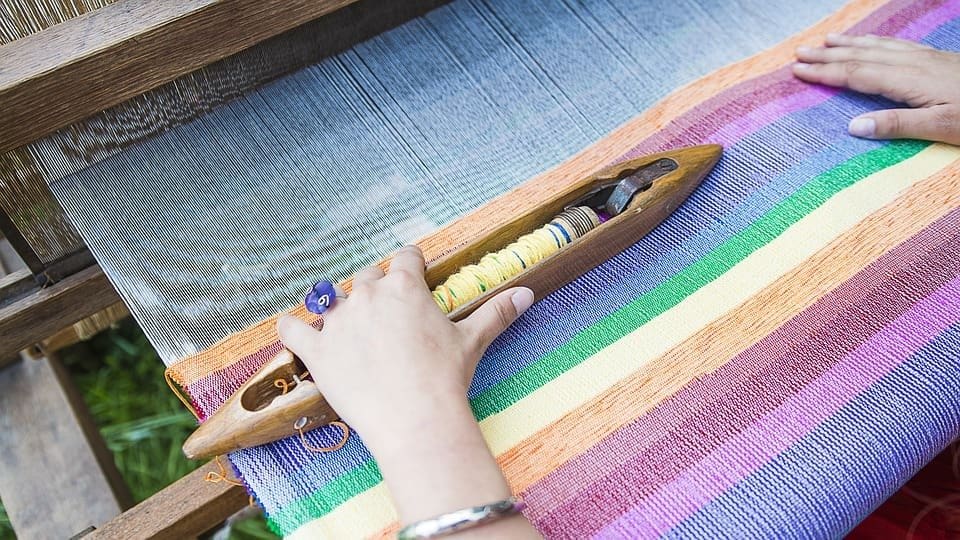In order to encourage Indian traditional textile-making, the government has been implementing various policy initiatives. Block Level Clusters is one of the components of the National Handloom Development Programme. Comprehensive Handloom Cluster Development Scheme (CHCDS), provides financial assistance upto Rs. 2 crores for setting up of Common Facility Centres (CFCs) including Common Service Centres (CSCs).
28 Weavers’ Service Centres (WSCs) are functioning across the country that are documenting traditional handloom textile products using different techniques viz. sale of traditional handloom products atvarious craft melas, exhibitions sponsored by the government, display of weaving skills/techniques, linking of handloom weavers with e-commerce, documentation of samples/products in digital format and developing new designs in different themes under the project “Tantavi” and promoting them through exhibitions and releasing catalogues.
National Centre for Textile Designs (NCTD) was set up in 2001 to promote traditional and contemporary designs so as to make handloom sector more responsive to the rapidly changing market demand. Presently, it is working from the premises of Weavers Service Centre (WSC), Delhi.
Indian Handloom Brand (IHB) promote production of niche handloom products with high quality, authentic traditional designs with zero defect and zero effect on environment.
Weaving & Designing Training Centre at Kullu, Himachal Pradesh has been established to keep alive the traditional profession of woollen products and meet out the increasing demand of skilled weavers/artisans. The training centre imparts training to unemployed youth and also up-grade skill of existing weavers by providing training in handloom weaving.
Silk Samagra is being implemented for the development of sericulture Industry in the country. Under this scheme, support is being provided to establish Common facility centres towards silk processing activities like Tub Dyeing, Arm dyeing and Fabric processing/finishing units for the benefit of traditional Silk making. These Common facility Centres will help in survival of traditional silk making in different regions of the country.
Jute Integrated Development Scheme(JIDS)aims at setting up local units and agencies at distant locations around the country through collaboration with bonafide bodies to carry out various activities. JID provides basic, advance and design development training programmes and rendering the backward and forward linkages to the existing and potential entrepreneurs at grass-root levels mainly on technology application and design /product development and disseminations
Samarth Scheme for Capacity Building in Textile Sector (SCBTS) was launched in 2017 for three years with an outlay of Rs. 1300 crore. The scheme will have National Skill Qualification Framework (NSQF) compliant training courses with funding forms as per the Common Norms notified by Ministry of Skill Development and Entrepreneurship (MSDE). 10 lakh people are expected to be skilled and certified in various segments of textile sector through the scheme, out of which 1 lakh will be in traditional sectors.
A Workshop on Bridging Japan and India by Bamboo was organised by Cane and Bamboo Technology Centre (CBTC) Assam at Bamboo and Cane Development Institute, Agartala, on 2ndAugust 2018. On that occasion Japan’s Economic Minister and Forest Minister of Tripura Government and other official officers were present. During the workshop,Japanese Artisan and Shilp-guru of Tripura, traditional Northeast artisans exchanged their crafts ideas and developed craft items.
This information was given by the Union Minister of Textiles, Smriti Zubin Irani, in a written reply in the Rajya Sabha today.

